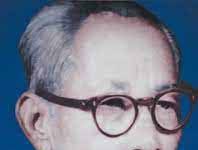William Blake-Brief Biography
William Blake, William Blake-Brief Biography
William Blake-Brief Biography
William Blake was a man of versatile genius. He was an artist, a musician and above all a great mystic poet of England. He introduced, spontaneously the romantic vein in literature which a little later, William Wordsworth consolidated with theory and brought to perfection.
This great poet with versatile genius was born in London on 28th November 1757. His father was a hosier who lived with his family at Broad Street, Golden Square. William Blake had four brothers and a sister. But amongst them, Blake achieved distinction. He was the second son of his parents.
The economic condition of the Blake family was not too good. So William Blake had to earn money for himself and hence, he could not have long institutional education. Instead, he engaged himself in the art of drawing. At the age of ten, he was sent by his father to a drawing school after noticing his eagerness in drawing. As a student of drawing, he earned proficiency at an earlier age. At fifteen, he was apprenticed to an engraver. As an artist, he was influenced by the Gothic style.
At the age of twenty-three, he set out to earn his living as a professional engraver. He did a lot of work in this profession for publishers and booksellers. During the next twenty years, he earned his livelihood from this profession.
Besides, drawing and verifying, he had an acute interest in music also and he pursued this branch of art in private. But he gave much attention to drawing and occasionally in versifying.
In 1783, at the age of nineteen, he completed his first manuscript of poetry which was printed for him by his friends. In the same year, he came into contact with Catherine Boucher, an illiterate daughter of a market-gardener and became enamoured of her and married her. Though Catherine was illiterate, yet he had a heart and mind to understand her artist husband. She learned to draw and paint well enough to be able to help her husband. Thus she made a perfect wife for him. Their married life seemed to be happy and peaceful. But a matter of sorrow was that Catharine remained childless and survived him by four years.
William Blake, during the years 1783 to 1787 met a number of distinguished persons. In 1788 he began to experiment with a new method of printing from an etched copper plate. He demanded that this method was revealed to him in a vision from heaven. Then he composed The Songs of Innocence and etched it on copper plates with decoration colored by himself. The volume was finished in 1889 and he sold it for a few Shillings. This was the prelude to his remarkable production.
In 1788 he shifted to Hercules Road, Lamberth. His living at this place was full of creative productivity. He, there, had written almost all his best poetic creations—amongst which ‘The Songs of Innocence’ and ‘The Songs of Experience’ are worth noting. During this period he proclaimed that he often met the visionary spirit of God and thus he inclined to mysticism the trend of which occupied the store of his thoughts and feelings.
In 1795 he produced his feat of a series of large colour prints which can scarcely be matched in the whole history of art for imaginative content and magnificence of colouring. By 1797 he had completed his series of 537 watercolor designs for Young’s ‘Night Thoughts’.
Then he devoted himself to his symbolic works which never produced any adequate return by their sales. He even laboured over a long poem ‘The Four Zoas’. During this time he faced difficulty in earning his livelihood as his work got no proper sale. In 1800 Blake with his wife and sister moved from London to Felpham in Sussex in order to work on some engravings for William Hayley, spending there three years he returned to London with a great sense of relief. During these three years, he was mentally disturbed, as he claimed, by mystic vision. In January 1804, Blake was brought to take on a charge of having used treasonable words against the royal hood of England. But he was acquitted because it was proved that the charge against him was false.
Then he was called for by Cromek for the production of a series of engravings for Robert Blair’s ‘The Grave’. But Cromek paid him a small sum of money and then employed another artist to engrave them. Thus he was deceived by Cromek.
In 1809 William Blake held an exhibition of his works at the house of his brother Jame in Broad Street, Golden Square. Sixteen pictures were exhibited, including his large painting on Chaucer’s ‘Canterbury Pilgrims’. But the exhibition proved futile.
In the years from 1810 to 1819, Blake fell into complete obscurity. He did nothing remarkable during this period—because he had been suffering from mental disturbance. The mystic vision had disturbed him much. Once he was confined to a mental hospital.
In 1818 William Blake entered his last phase of life and had been leading a happy life till his last breath. He became the centre of many young artists who regarded him with affection and reverence. In 1821, he executed his most widely known art, the Illustrations of the ‘Book of Job’. In 1825, he was asked to make an illustration of Dante’s ‘Divine Comedy’ and to engrave them. He completed a hundred colour designs of which seven were engraved. But suddenly after a quick illness, while still, he was working on this book, he died on the 12th of August 1827. His mortal body was buried in an unmarked grave in Burnhill Fields Cemetery. Thus a busy life of a versatile genius came to an end.
To say about his personality it is known that he was a man of painstaking labour and an unsteady mind. He began work at random and struck to that till he could finish it. His mind was not, as seemed, systematically cultivated. He often said that he had been chased by the divine spirit which caused a disturbance in his mind. In spite of his mental turmoil, he could pursue mental integrity in dealing with his fellow men. He was deeply religious and lived an honest and sincere life. His wife was a bliss upon him. Though she was illiterate yet, he could cope with her and vice-versa.
The credit for being the creator of fourteen poetry books goes to William Blake. Amongst his books, ‘The songs of Innocence’ and ‘The Songs of Experience’ are his masterpieces. Most of the poems in these volumes are mystic. His poems are short but replete with deep meaning. This volume is equally enjoyable to children, young and old people. His poetry teaches that the world is the expression of the Divine Spirit. His poetry is both of sight and sound. He used symbolism abundantly in these poems. His poetry bears almost all the characteristics which are generally present in the poems which are called romantic poems. As a poet, he was a follower of none. He composed poems under his own style inspired by divinity. But though, all the characteristics of the Romantic Tradition of Poetry are present in his poetry yet the honour of being the originator of the Romantic Tradition in literature goes to William Wordsworth and it is because William Wordsworth made the theory and practising this genre of poetry with many of his followers brought the Tradition into perfection. In as much as William Blake introduced the romantic trial in practice, which a little later was brought to perfection by Wordsworth, so Blake may be called the Herald of the Romantic Movement. 0 0 0
N.B. The article ‘William Blake‘ originally belongs to the book ‘The World Writers-Brief Biographies‘ by Menonim Menonimus.
William Blake
Books of Composition by M. Menonimus:
- Advertisement Writing
- Amplification Writing
- Note Making
- Paragraph Writing
- Notice Writing
- Passage Comprehension
- The Art of Poster Writing
- The Art of Letter Writing
- Report Writing
- Story Writing
- Substance Writing
- School Essays Part-I
- School Essays Part-II
- School English Grammar Part-I
- School English Grammar Part-II..
Books of S. Story by M. Menonimus:
Related Search:











